44+ Sample Meal Plans
-
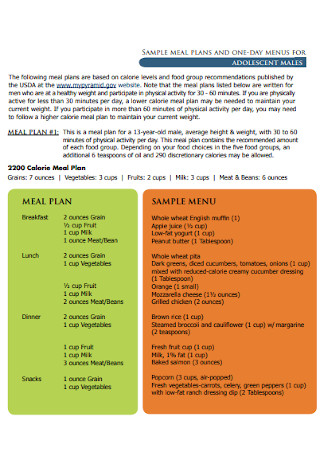
One Day Meal Plan Template
download now -
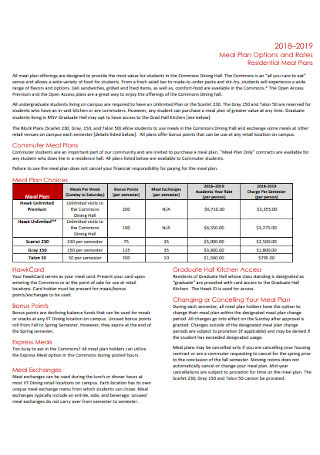
Residential Meal Plans
download now -
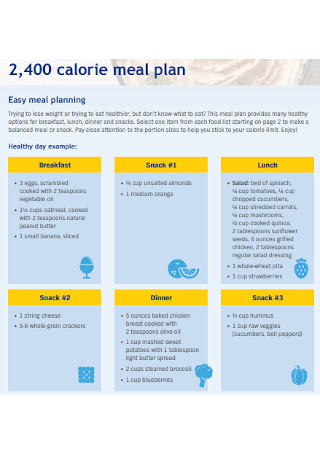
Meal Calorie Plan
download now -
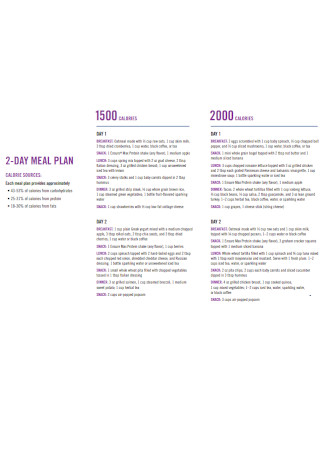
Two Days Meal Plan
download now -
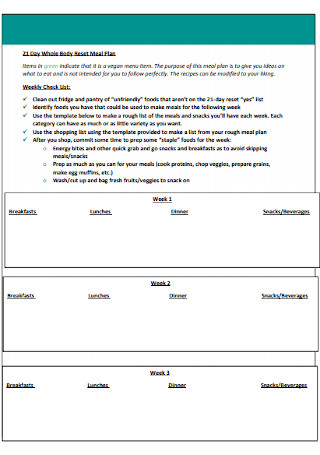
Whole Body Reset Meal Plan
download now -
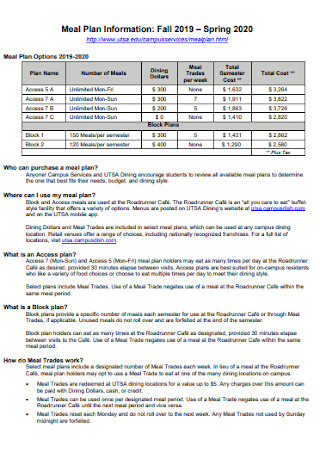
Campus Meal Plan Template
download now -
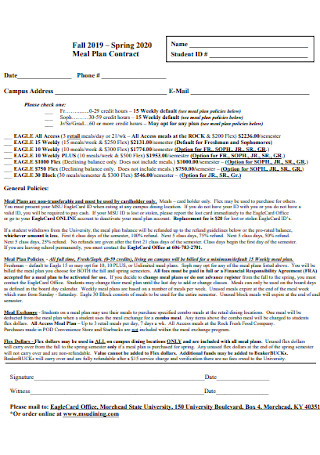
Meal Plan Contract
download now -

Healthy Meal Planning Template
download now -
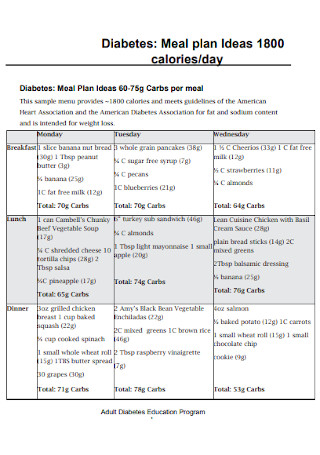
Meal plan Ideas Template
download now -

Carbohydrate Meal Plan
download now -
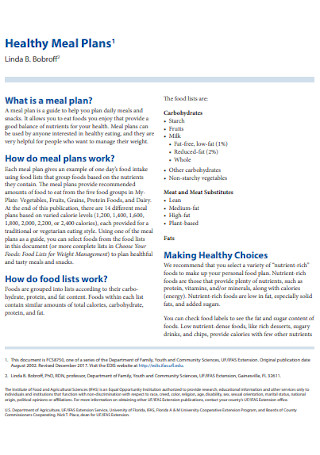
Healthy Meal Plans
download now -
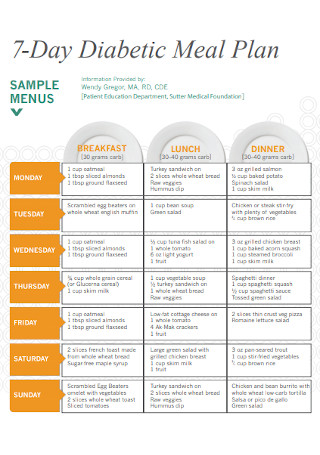
Seven Day Diabetic Meal Plan
download now -
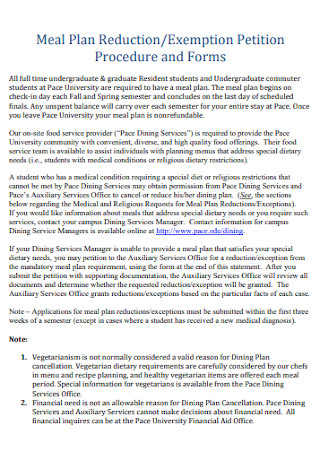
Meal Plan Reduction Template
download now -
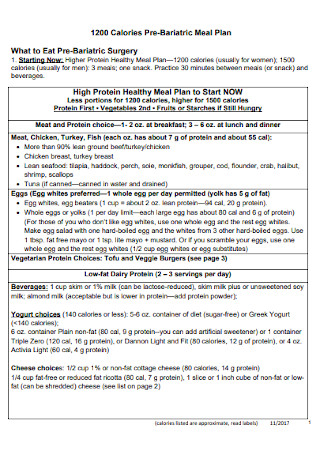
Calories Pre-Bariatric Meal Plan
download now -
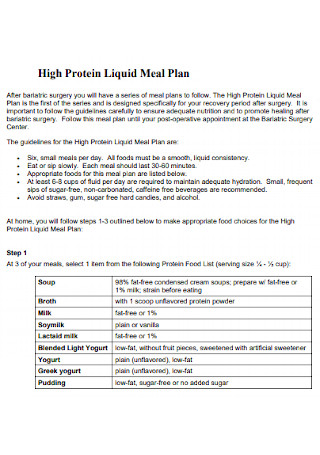
High Protein Liquid Meal Plan
download now -
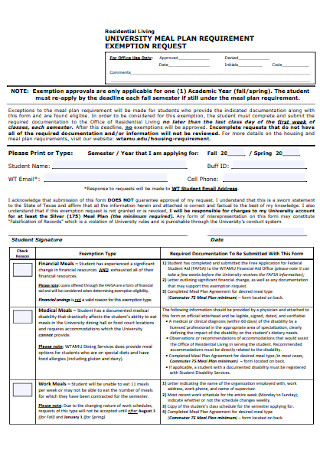
University Meal Plan Template
download now -
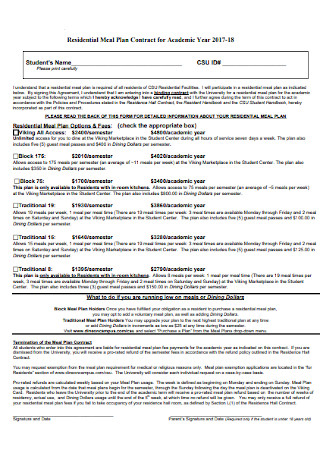
Residential Meal Plan Contract for Academic
download now -

Day Plant Meal Plan
download now -

Meal Plan Rates Template
download now -
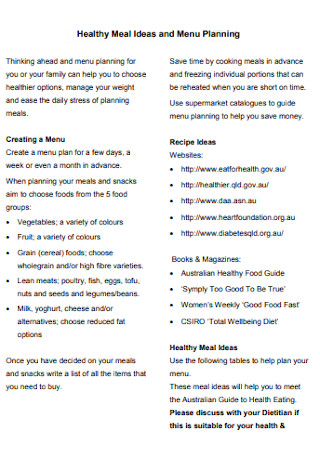
Healthy Meal Ideas Plan
download now -

Meal Plan Agreement
download now -
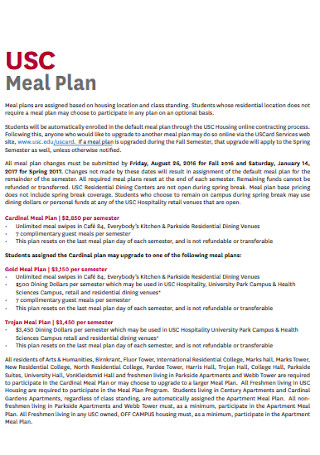
Simple Meal Plan Template
download now -
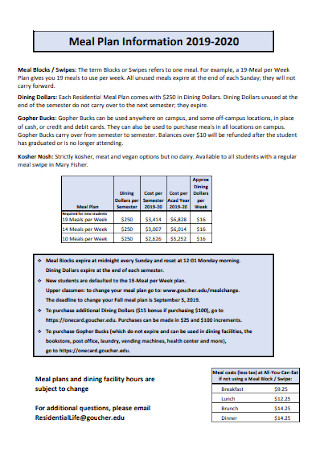
Meal Plan Information Template
download now -

Sample Meal Plan for Pregnancy
download now -

Project Meal Plan Template
download now -
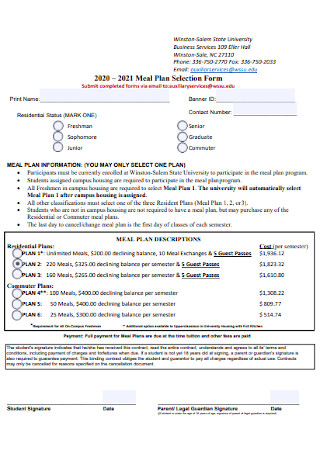
Meal Plan Selection Form
download now -
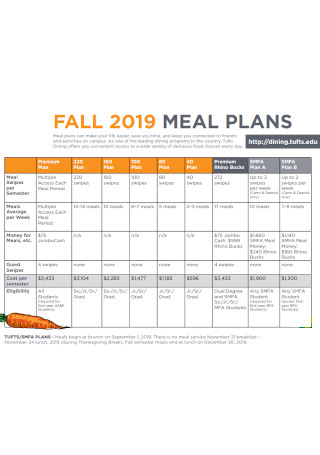
Fall Meal Plan
download now -
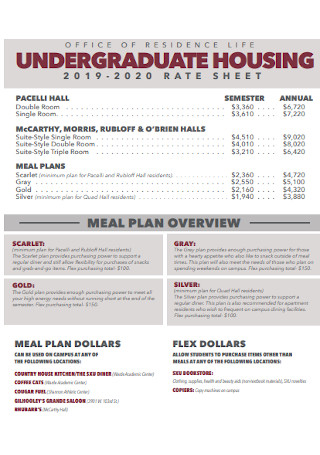
House Meal Plan Template
download now -
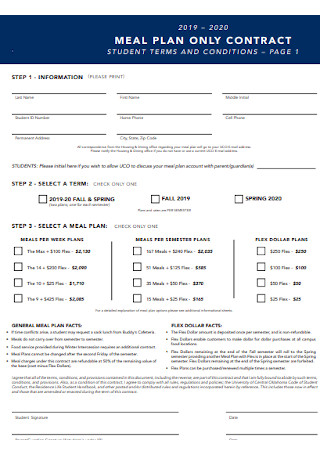
Campus Meal Plan Contract
download now -
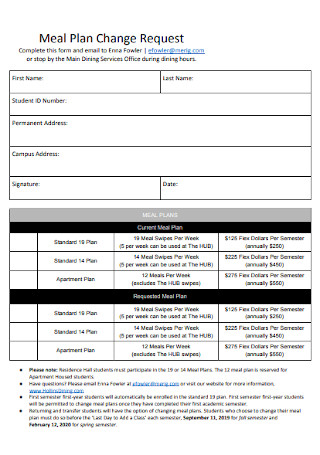
Dining Meal Plan Template
download now -

General Meal Plan Template
download now -
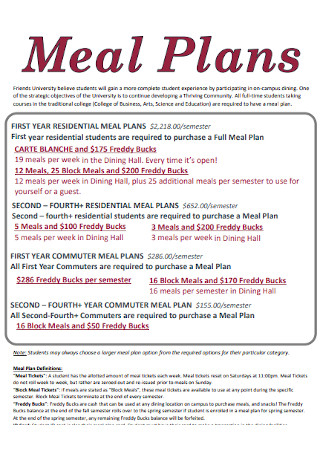
Formal Meal Plan Template
download now -
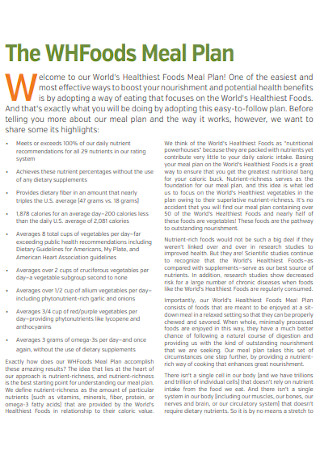
Foods Meal Plan Template
download now -
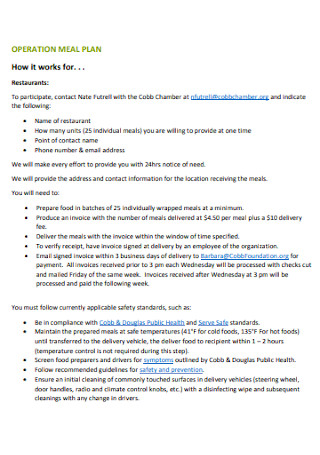
Operation Meal Plan Template
download now -
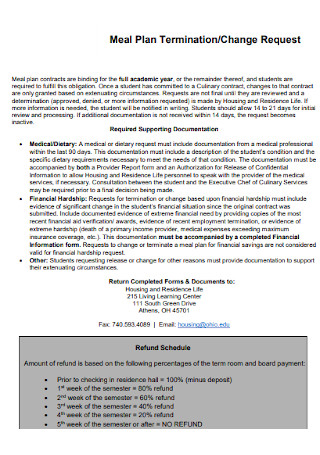
Meal Plan Termination Template
download now -
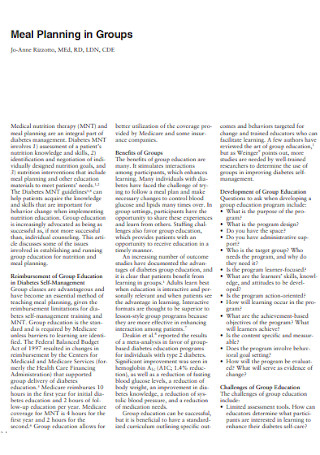
Meal Planning in Groups
download now -
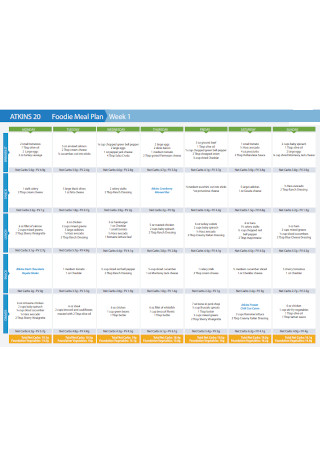
Foodie Meal Plan Template
download now -
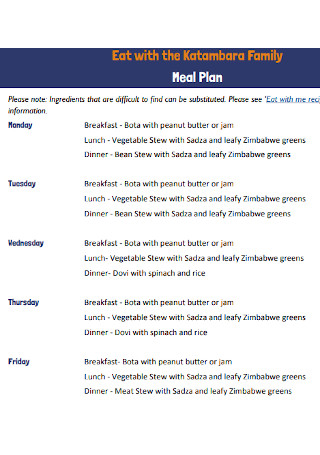
Family Meal Plan Template
download now -

Housing and Meal Plan Rates Template
download now -
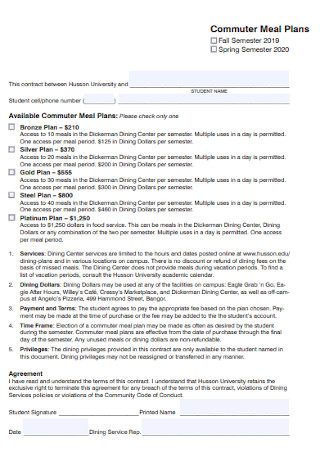
Commuter Meal Plans
download now -
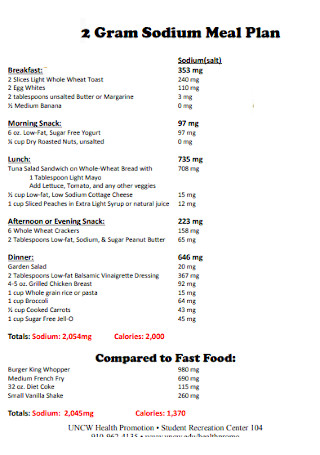
Two Gram Sodium Meal Plan
download now -
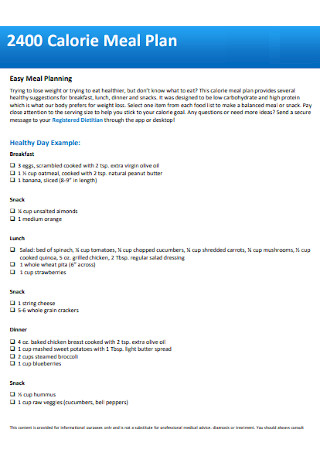
Calorie Meal Plan Example
download now -
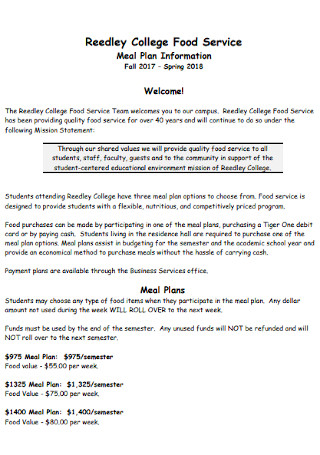
College Food Meal Plan
download now -
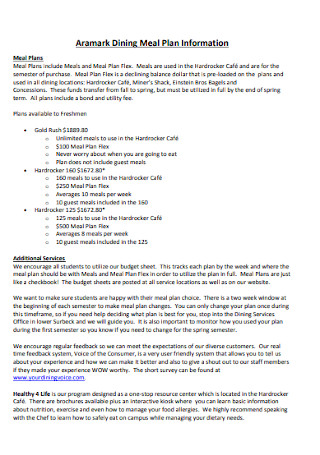
Dining Meal Plan Information Template
download now -

Summer Meal Plan Template
download now
What Is Meal Planning?
Meal Planning is the act of deliberately designing one’s meal schedule for the entire week or month. It involves a lot of prior planning and researching. A meal plan is customized to fit an individual’s needs and preferences.
According to Mayo Clinic, planning your menu for the week gives you more control over your nutrition and diet. It also saves you time and money.
Types of Meal Plans
The word most commonly associated with diet is restriction. What am I not allowed to eat? What food should I eat less of in order to make my diet work? Meal plans help you reach your health and wellness goals. There are dozens of diet plans out there but these are some of the popular ones:
How To Start Meal Planning
The printable and customizable templates above are designed to help you plan each meal accordingly. There are daily and weekly meal plans that you can use to jumpstart your diet goals today! Keep these steps in mind when crafting your meal plan:
Step 1: Establish Your Goal
For some people, meal planning is not a personal choice. Unhealthy habits have forced them to seek medical help. The doctor might prescribe a low sodium and low fat diet to help regulate cholesterol or blood pressure. Have a firm but realistic goal in mind to serve as your guide and help you stick to your plan.
Step 2: Research and Inform Yourself
It’s fairly easy to access information and gain knowledge nowadays. Arm yourself with the right information; this means science-backed and medically sound information. You can consult a doctor or nutritionist to be sure. You could also try visiting your nearest grocery store and take mental notes of what types of food are available, then list the ones that follow your meal plan.
Step 3: Plan Your Menu
You can decide on a daily, weekly or even monthly meal plan. Input the dates and label your meals accordingly: breakfast, lunch and dinner. You can also include light morning and afternoon snacks in between meals.
Step 4: Record Milestones And Track Your Progress
Celebrate small wins and don’t be too hard on yourself, especially at the beginning when you’re still adjusting. Setting realistic goals instead of overnight results will help you persevere in your plans. Track your progress and monitor any changes. For instance, if your meal plan is calorie counted, write down your weight before the diet and after.
FAQs
What is the importance of meal planning?
Planning your menu ahead can save energy, time and money. Meal planning can help you budget not only your finances, but your food (i.e. portion control). If you are working towards a particular weight goal, incorporating a meal plan can be an important way to shed or gain pounds.
How do I plan a menu for a week?
At the beginning of every week, list down the food you plan to eat for the entire 7 days. Make sure to specify each meal for each day of the week. List down the ingredients needed and prepare your grocery list. For example, the menu for Monday can be oatmeal and apple for breakfast, grilled salmon and brown rice for lunch, bean and cheese burrito for dinner and so on.
What do you mean by meal planning?
Meal planning is essentially being intentional with your meals. It means taking the time to list down your daily or weekly food menu. People usually plan their meals in order to achieve a health-related goal.
Starting a meal plan may seem time-consuming at first. But the health benefits often outweigh the cons. If our main objective is to be more intentional with what we eat, then we need to start paying attention to what we actually put into our bodies. Food is fuel, after all. To begin your healthy journey, find the right template above and start planning!
